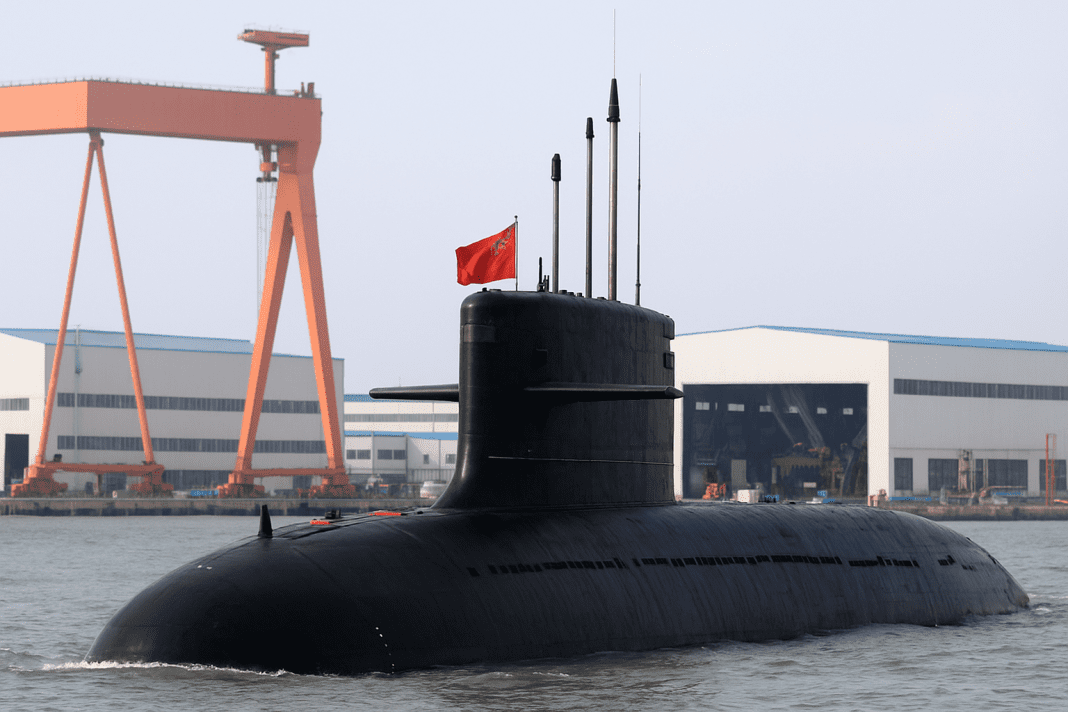The Pakistan Navy is preparing to add a powerful new weapon to its fleet — the first Chinese-built Hangor-class submarine, which is expected to enter active service next year. This marks a major milestone in the Pakistan Navy’s modernization program and highlights its growing partnership with China.
Pakistan Navy Gains Major Boost with New Chinese Submarine
The project, worth nearly $5 billion, includes a total of eight submarines. The first four are being built in China, while the remaining four will be assembled in Pakistan to improve local shipbuilding skills and enhance the Pakistan Navy’s technical expertise.
These submarines will allow the Pakistan Navy to patrol deeper into the Arabian Sea and the Indian Ocean, expanding its reach and strengthening its presence in regional waters. This move aims to balance naval power in the area, especially in response to India’s growing maritime strength.
The Hangor-class submarines are based on advanced Chinese designs. They feature superior stealth technology, longer underwater endurance, and advanced sonar systems. These capabilities will enable the Pakistan Navy to carry out extended patrols, monitor maritime activity, and protect national interests more effectively.
Strategic Partnership with China Strengthens Pakistan Navy
The deal between Pakistan and China reflects their deepening military partnership. China has long been a key defense supplier for the Pakistan Navy, supporting its modernization and capacity-building efforts. Between 2020 and 2024, Pakistan accounted for more than 60% of China’s total arms exports, according to global defense data.
The Hangor-class submarine project represents a step forward in technological collaboration. China is not only delivering submarines but also helping Pakistan enhance its defense manufacturing capabilities. This includes training engineers, sharing production techniques, and transferring knowledge to strengthen the Pakistan Navy’s self-reliance.
China’s Yangtze River shipyard in Hubei province has already launched three of the submarines. After completing construction, the shipyard will conduct extensive testing before the Pakistan Navy inducts them into its fleet.
Bitcoin pact stuns IMF—Pakistan and El Salvador defy oversight with Bitcoin pact
In addition to submarines, the partnership between Pakistan and China extends to other areas of defense. The Pakistan Navy and Chinese defense industries are working together on unmanned systems, artificial intelligence (AI), and electronic warfare technologies. These initiatives are part of Pakistan’s goal to modernize its naval capabilities using next-generation technologies.
China’s involvement in Pakistan’s defense and infrastructure also includes the China-Pakistan Economic Corridor (CPEC) — a major 3,000-kilometer project connecting China’s Xinjiang province to Pakistan’s Gwadar Port. Through this corridor, China aims to secure its energy routes while enhancing access to the Arabian Sea, where the Pakistan Navy plays a vital role in ensuring maritime safety and operational readiness.
Navy’s Expanding Role in the Indian Ocean Region
The arrival of the Chinese-designed submarines will significantly enhance the Pakistan Navy’s regional strength. With the Hangor-class vessels, the Pakistan Navy will be able to perform longer and deeper patrols across strategic sea routes, including the Arabian Sea and the Indian Ocean. These submarines will also enable Pakistan to conduct advanced missions such as surveillance, reconnaissance, and anti-submarine operations.
For China, this partnership extends its influence into the Indian Ocean, a region critical for international trade and energy transport. By supporting the Pakistan Navy, China is expanding its strategic presence in South Asia, where multiple powers — including India and the United States — maintain active naval operations.
India currently operates a mix of nuclear-powered and diesel-electric submarines, many developed with the help of France, Germany, and Russia. In comparison, Pakistan’s new Hangor-class submarines give the Pakistan Navy a significant boost in underwater warfare capability.
The commissioning of the first Hangor-class submarine next year will mark a key turning point in Pakistan’s maritime defense history. It showcases the Pakistan Navy’s progress toward achieving greater self-sufficiency through international collaboration and advanced training.
This project also highlights how the Pakistan Navy and China have built a partnership rooted in shared goals, mutual trust, and long-term cooperation. Their collaboration includes shipbuilding, technology sharing, and industrial development — all aimed at strengthening Pakistan’s maritime defense infrastructure.
As of now, three submarines are nearing completion in China, with the first one scheduled to officially join the Pakistan Navy next year. The remaining submarines will be delivered by 2028, completing the fleet of eight vessels that will form the backbone of Pakistan’s future underwater defense strategy.
The addition of these submarines marks a new era for the Pakistan Navy, reinforcing its position as a growing maritime power in the Indian Ocean and demonstrating China’s expanding influence in the region.

